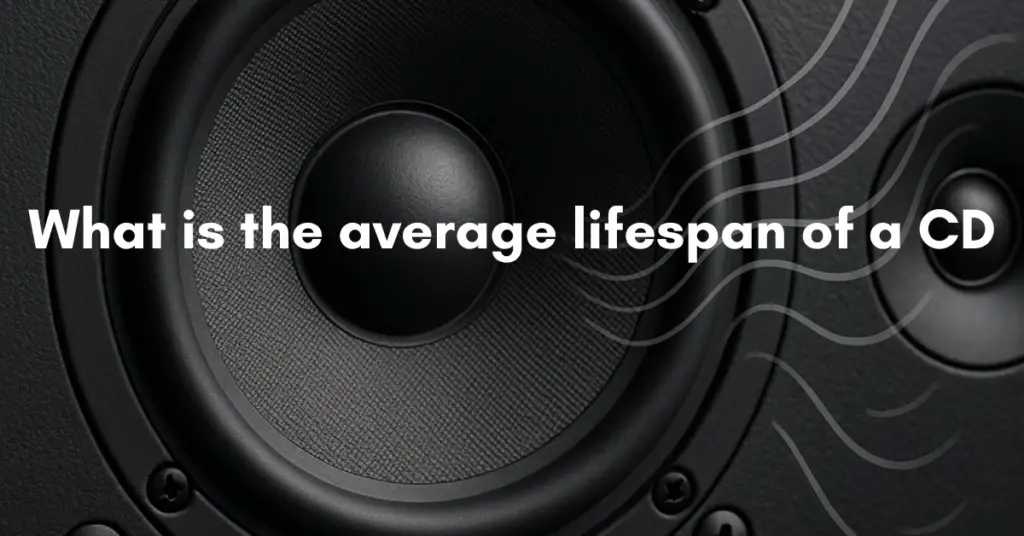The average lifespan of a CD depends on how it was manufactured, how it is stored, and the type of disc it is. Under proper conditions, a high-quality, factory-pressed audio CD can last decades, while recordable CDs (CD-R and CD-RW) vary widely due to differences in dye stability and construction. Although CDs were once advertised as “lasting 100 years,” real-world studies show more modest lifespans influenced by environmental and material factors.
1. Lifespan of Factory-Pressed (Commercial) CDs
Factory-pressed CDs—the kind used for commercial music albums and software—contain a physical aluminum or gold reflective layer pressed into plastic. They do not rely on organic dyes, which makes them more stable.
Typical lifespan:
• 25 to 50 years under normal conditions
• 50 to 100+ years under archival conditions
Key threats to pressed CDs include:
• Corrosion of the aluminum reflective layer
• “Disc rot” caused by oxidation or adhesive failure
• Scratches on the label side (where the data layer is very close)
When stored properly, many pressed CDs from the 1980s still play perfectly today, showing that a multi-decade lifespan is realistic.
2. Lifespan of CD-R (Recordable) Discs
CD-Rs use a dye layer that the laser “burns” to record data. Because organic dyes degrade over time, CD-Rs are much more sensitive to heat, light, and humidity.
Average lifespan:
• 5 to 25 years depending on dye quality
• High-quality archival CD-Rs (with phthalocyanine dye and gold reflective layer) may reach 40–100 years
Cheap CD-Rs using cyanine or azo dyes may fail significantly sooner. Many users discover that low-quality CD-Rs burned in the early 2000s have already become unreadable.
3. Lifespan of CD-RW (Rewritable) Discs
CD-RWs use a phase-change metal alloy instead of dye. These discs are designed for rewriting rather than longevity.
Typical lifespan:
• 2 to 10 years before data degradation
• 1,000 rewrites maximum, but each cycle reduces stability
CD-RWs are the least stable long-term storage medium and should not be used for archival purposes.
4. Environmental Factors That Affect CD Lifespan
Several external conditions heavily influence how long a CD lasts, regardless of type. CDs degrade faster when exposed to:
• Heat (accelerates chemical breakdown of dyes and plastics)
• Humidity (encourages oxidation and delamination)
• UV light (destroys dye layers, especially in CD-Rs)
• Physical handling (scratches, fingerprints, abrasion)
• Poor storage cases (cheap plastics can off-gas damaging chemicals)
Ideal storage conditions extend lifespan significantly—cool, dark, dry locations with stable temperatures.
5. Mechanical Wear vs. Chemical Degradation
Unlike vinyl or tape, CDs do not degrade from being played. The laser is non-contact and does not wear down the surface. Instead, CDs typically fail due to chemical breakdown:
• Dye fading (CD-R)
• Aluminum oxidation (“CD rot”)
• Layer separation (delamination)
• UV-induced damage
This means a CD that sits untouched in poor conditions may fail sooner than one played regularly but stored correctly.
6. Signs a CD Is Reaching the End of Its Life
A failing CD may show:
• Slow loading or difficulty reading
• Skipping or dropouts
• Visible pinholes in the reflective layer
• Cloudiness or discoloration
• Bronzing on older discs (common in early European pressings)
Once the reflective or data layer is damaged, the disc is typically unrecoverable.
7. How to Maximize CD Lifespan
To preserve a CD for as long as possible:
• Store vertically in jewel cases, not stacked
• Keep in a cool, dry, dark environment
• Avoid direct sunlight
• Handle by the edges only
• Keep away from extreme temperatures (cars are especially harmful)
• Use archival-grade CD-Rs for important backups
With proper care, many CDs easily exceed their expected lifespan.
The average lifespan of a CD varies widely depending on disc type and storage conditions. Factory-pressed CDs often last 25 to 50 years or more, while CD-Rs typically last 5 to 25 years, with high-quality archival discs lasting longer. CD-RWs have the shortest life expectancy due to their rewriteable alloy layer. While CDs are more durable than magnetic tape, they are not permanent. Proper storage is essential for preserving discs over decades and preventing chemical degradation.

